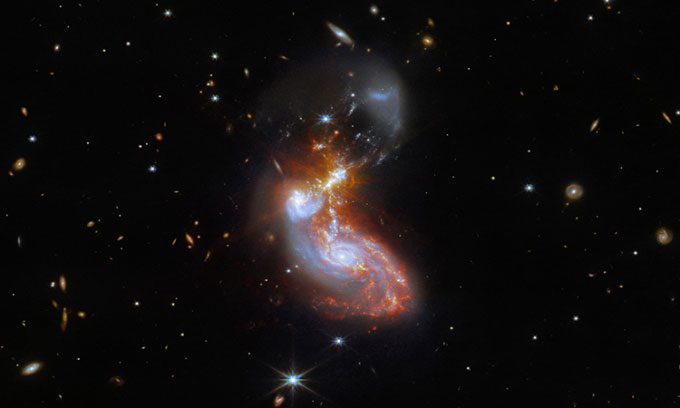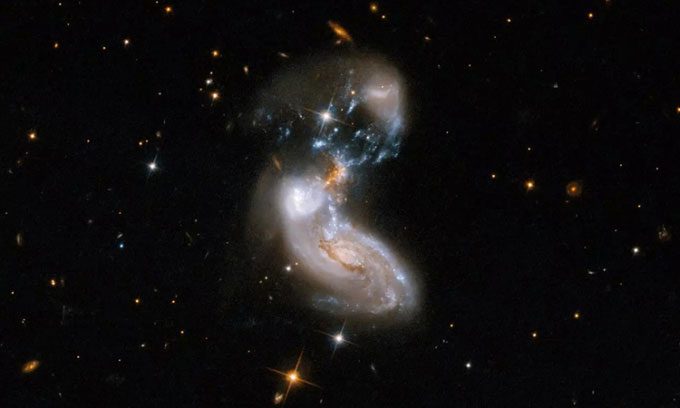On December 1, NASA unveiled a stunning image of the galaxy collision event ZW II 96, located approximately 500 million light-years away.

The ZW II 96 galaxy system captured by the James Webb Telescope. (Image: NASA/ESA/CSA)
As part of the constellation of Hydra, the ZW II 96 galaxy pair is in the process of merging and is extremely chaotic, with star-forming regions resembling glowing threads connecting the cores of the two galaxies, while the spiral arms of the smaller galaxy are distorted due to gravitational disturbances.
“The presence of these star-forming regions has made ZW II 96 an attractive target for the James Webb Space Telescope,” NASA stated in a release on December 1.
In this new observation, Webb utilized its NIRCam and MIRI instruments to capture this intense collision in infrared wavelengths, providing an unprecedented detailed and vibrant view.

ZW II 96 captured by the Hubble Telescope in 2008. (Image: NASA/ESA)
According to NASA, due to the “young starburst,” the ZW II 96 system shines particularly brightly in infrared wavelengths, with a brightness over 100 billion times that of the Sun.
Immediately after Webb was launched, astronomers from around the world proposed to study complex galaxy ecosystems, including galaxy merger events like ZW II 96.
With a sensitivity 100 times greater than the Hubble Telescope and the ability to “look back in time,” Webb promises to illuminate the details of complex galactic environments and provide insights into the distant universe.


















































